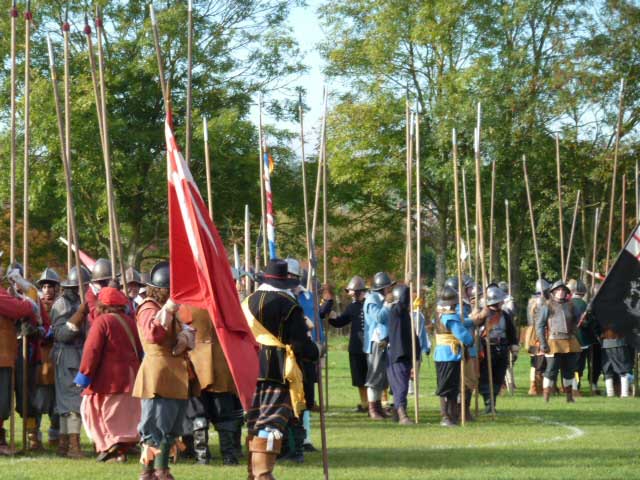The English Civil War and Everyday Life
Over the last couple of years, a group of Warwickshire enthusiasts have been translating 17th century Civil War Parliamentary loss account documents. The Southam group has been meeting regularly in Southam Heritage’s project room at Tithe Place. They are looking not just at Southam, but the surrounding villages as well, so that a social picture can be drawn up of the common people – our ancestors – who were living here then.
Southam’s unique position on the cross roads of the old west to east drover’s roads, (bringing sheep, cattle and horses from the Welsh hills, through the Midlands and on to London,) plus the south to north coaching and trade routes from London to Scotland made it a busy place for both the Parliament and Royalist soldiers. However the research has not been so much about the soldier’s life, but about how the War affected the everyday social life of those living in and around Southam during those few hectic years of 1642 to 1651.
Many local families who had a trade to ply, or land to look after did not travel far, but that was by no means everyone, and a look into this short period of time tells us a lot about the people who lived and worked in and around Southam. As a member of the research group, the first thing I noticed was how many similar surnames are still in the area today: Mann, Worrall, Griffin, Evans and Chamberlaine, By the 17th century there are local Welsh names too, perhaps some who had passed through whilst droving and stayed, maybe marrying local girls? We even know the name of a farm at Snowdon where one drover buried in Southam churchyard came from. One July he left his wife and children at home to travel with his cattle to London and died that August in a heat wave at Southam – this information is thanks to margin notes in the parish register!
A look in the Bishops Itchington parish records shows that even before the Civil War started there was a burial on 10th June 1642 of a James Poole, the son of Mary who died there on his journey from Ireland to Marlborough. One can only feel sorry for the family who never knew what happened to their son/brother. An indication of distances travelled and possibly of Scottish origin comes from an entry in the parish records of a burial on 7th November 1643 of an unknown young man with red hair found dead in the fields, aged about 18 years old. A wounded soldier on his way home to Cheshire from Oxford was buried on 27th November 1642 – he may well have sustained his injuries a month earlier at Edgehill.
All those ‘passing through’ soldiers had to be fed and if no one provided food they would help themselves – lambs and pigs were slaughtered and roasted at the expense of the villagers. Horses killed in battle were replaced by ‘exchange’ that is, horses were just taken complete with saddles and bridles from their local owners, even while working in the fields. So who was to pull the plough now to prepare for the following year’s harvest?
A major skirmish took place in the fields surrounding Southam on 23rd August 1642, two months before the Battle of Edgehill. Many of the crops around Southam were destroyed as it was all open fields and the soldiers and horses trampled them. So what crops were they to harvest that year to feed themselves during the winter? What wasn’t used to feed the soldiers and their horses was destroyed underfoot, and those remaining at home during the Civil War period were very much touched by the war, whether they wanted to be or not.
By Linda Doyle
The photograph shows Civil War re-enactors at Edge Hill. Linda’s book ‘The Battle of Southam’ is on sale at Southam Heritage Centre. If you are interested in finding out more about local history, please contact us or visit our website www.southamheritage.org to find out current opening times. You can also telephone: 01926 613503 email southamheritage@hotmail.com or find us on Facebook: Southam Heritage Collection.


Leave A Comment